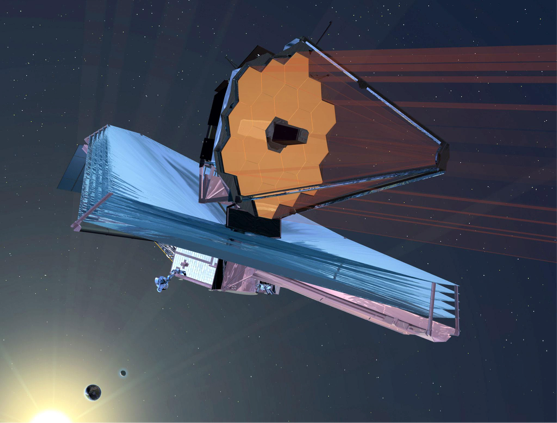The James Webb Space Telescope (JWST) will be a powerful capability to understand the formation and evolution of planetary systems. We are part of two instrument science teams (NIRCam and NIRISS) in the final stages of preparing the guaranteed time observing programs. NIRCam is a workhorse imaging facility with two redundant arms covering two fields each of 2.2 arc minutes on a side giving a field of view of 2.2×4.4 arc minutes squared. Each arm takes data in a long-wave (2.5-5.3 micron) channel and short-wave (0.7-2.3 microns) channel simultaneously. NIRISS is comprised of diverse imaging and spectroscopic capabilities including slitless wide-field imaging spectroscopy, single object slitliess spectroscopy (focussed on characterizing transiting exoplanets), and an aperture masking interferometer which provides the highest possible spatial resolution on JWST. Specifically, we are playing a strong role in the following programs:
1. Investigation of the very low mass IMF and free-floating planets in embedded clusters with NIRCam (and participating in a complementary program with NIRISS) led by Michigan.
2. A direct imaging survey with NIRCam to search for planetary mass companions as low as Uranus and Neptune in mass and orbital radii beyond 10 AU around a handful of nearby young low mass stars (co-lead Josh Schileder, GSFC) with Chas Beichman (JPL), and George Rieke (Arizona).
3. Broadband imaging of young stellar objects with morphological evidence from disk imaging (in scattered light and thermal emission) for on-going planet formation at large orbital radii (> 1”) with NIRCam, as well as within 0.2” with the AMI mode on NIRISS. Post-doc Alexandra Greenbaum is playing a leading role in coordinating this program.
4. We are leading a spectral retrieval effort for use in characterizing planetary mass companions found around nearby stars in order to test theories of planet formation and evolution. Spectra will be obtained of several companions with masses 2-20 Jupiter mass at orbital separations from 30-300 AU. This work, led locally by post-doc Alex Howe in collaboration with Mark Marley (NASA-Ames), Jonathan Fortney (UCSC), and Michael Line (ASU). We will support spectroscopy programs using coronagraphic multi-filter NIRCam imaging (led by Chas Beichman, JPL), IFU spectra from NIRSpec led by Kalus Hodapp (Hawaii), and a program to characterize nearby Y dwarfs led by Tom Roellig (NASA-Ames).
We are involved in several additional programs including protostar spectroscopy led by Thomas P. Greene (NASA-Ames), as well as exoplanet transit spectroscopy of GJ436b with NIRISS, and are involved in (or leading) a number of Cycle 1 proposals.


